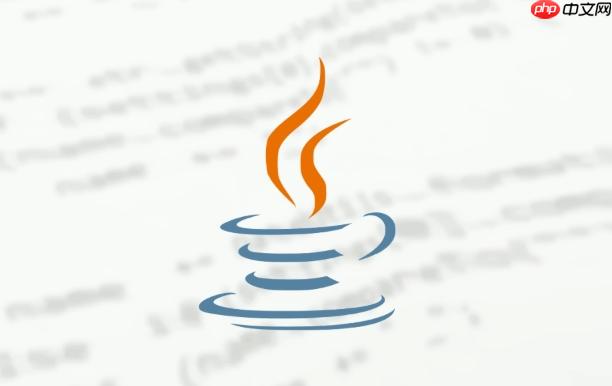CompletableFuture通过thenApply和thenCompose实现串行任务,前者用于同步转换结果,后者链式调用避免嵌套;利用thenCombine合并两个异步结果,并通过allOf并行执行多个任务并等待完成;结合exceptionally和handle进行异常处理与降级;建议使用自定义线程池避免阻塞公共池,对耗时操作采用异步切换,并在组合多个请求时用allOf配合join安全获取结果,提升异步编程的性能与可维护性。

在Java中,CompletableFuture 是实现异步编程的核心工具之一。它不仅支持非阻塞的任务执行,还提供了丰富的组合能力,让我们可以灵活地编排多个异步任务之间的依赖关系。掌握这些组合技巧,能显著提升代码的可读性和执行效率。
当一个任务依赖前一个任务的结果时,适合使用串行组合方式。
thenApply 用于对上一步结果进行同步转换:
CompletableFuture<String> future = CompletableFuture
.supplyAsync(() -> "Hello")
.thenApply(msg -> msg + " World");
future.thenAccept(System.out::println); // 输出: Hello World
thenCompose 用于链式调用另一个返回 CompletableFuture 的方法,避免嵌套:
立即学习“Java免费学习笔记(深入)”;
CompletableFuture<String> chained = CompletableFuture
.supplyAsync(() -> "User123")
.thenCompose(userId -> fetchUserInfoAsync(userId));
// 假设 fetchUserInfoAsync 返回 CompletableFuture<String>
与 thenApply 不同,thenCompose 把内部的 CompletableFuture “展平”,类似 Stream.flatMap 的作用。
多个独立任务可以并行执行,完成后合并结果。
thenCombine 用于合并两个异步任务的结果:
CompletableFuture<Integer> priceFuture = fetchPriceAsync("item-001");
CompletableFuture<Integer> taxFuture = calculateTaxAsync(100);
CompletableFuture<Integer> totalFuture = priceFuture
.thenCombine(taxFuture, (price, tax) -> price + tax);
totalFuture.thenAccept(total -> System.out.println("总价: " + total));
若要同时触发多个任务并等待全部完成,使用 CompletableFuture.allOf:
CompletableFuture<String> task1 = fetchDataAsync("url1");
CompletableFuture<String> task2 = fetchDataAsync("url2");
CompletableFuture<String> task3 = fetchDataAsync("url3");
CompletableFuture<Void> allDone = CompletableFuture.allOf(task1, task2, task3);
// 注意:allOf 返回的是 Void,需手动获取各任务结果
allDone.thenRun(() -> {
try {
System.out.println("全部完成: " + task1.get() + ", " + task2.get() + ", " + task3.get());
} catch (Exception e) {
e.printStackTrace();
}
});
由于 allOf 返回 CompletableFuture<Void>,需要额外处理异常和结果提取。
异步任务出错不应让整个流程中断。使用 exceptionally 提供降级结果:
CompletableFuture<String> safeFuture = fetchDataAsync("broken-url")
.exceptionally(ex -> {
System.err.println("加载失败: " + ex.getMessage());
return "默认内容";
});
更强大的 handle 可以统一处理正常结果和异常:
CompletableFuture<String> result = serviceCallAsync()
.handle((data, ex) -> {
if (ex != null) {
log.error("调用失败", ex);
return "备用数据";
}
return data.toUpperCase();
});
在真实项目中,合理使用线程池能避免阻塞ForkJoinPool公共线程:
ExecutorService customExecutor = Executors.newFixedThreadPool(4);
CompletableFuture<String> future = CompletableFuture
.supplyAsync(() -> callRemoteApi(), customExecutor)
.thenApplyAsync(result -> process(result), customExecutor);
避免在 thenApply 中做耗时阻塞操作,应使用 thenApplyAsync 切换到合适的执行器。
组合多个远程请求时,优先使用 allOf 并行发起,再通过 join() 安全获取结果(不会抛检查异常):
List<CompletableFuture<String>> futures = urls.stream()
.map(url -> downloadPageAsync(url))
.toList();
CompletableFuture.allOf(futures.toArray(new CompletableFuture[0]))
.join(); // 等待全部完成
List<String> results = futures.stream()
.map(CompletableFuture::join)
.toList();
基本上就这些。合理运用 thenCompose、thenCombine、allOf 和异常处理机制,能让异步逻辑清晰可控,既提升性能又增强容错能力。
以上就是在Java中如何使用CompletableFuture组合多个异步任务_异步任务组合实践技巧的详细内容,更多请关注php中文网其它相关文章!

每个人都需要一台速度更快、更稳定的 PC。随着时间的推移,垃圾文件、旧注册表数据和不必要的后台进程会占用资源并降低性能。幸运的是,许多工具可以让 Windows 保持平稳运行。

Copyright 2014-2025 https://www.php.cn/ All Rights Reserved | php.cn | 湘ICP备2023035733号